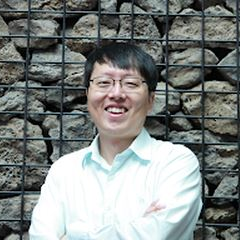Strong Light Fields Coupled with Plasmonic Nano-Structures
A special issue of Photonics (ISSN 2304-6732). This special issue belongs to the section "Optical Interaction Science".
Deadline for manuscript submissions: closed (20 December 2022) | Viewed by 5865
Special Issue Editors
Interests: attosecond physics; strong laser matter interaction; nanophotonics; ultrafast optics; plasmonics
Interests: advancing ultra-precision light source technology from an IR to an EUV regime using the optical comb of the femtosecond pulse laser, and its interdisciplinary applications including precision spectroscopy, time/frequency standards, precision laser ranging, optical metrology, and nano/micro material processing
Special Issues, Collections and Topics in MDPI journals
Special Issue Information
Dear Colleagues,
The interaction of strong light fields with plasmonic nanostructures presents a particular arena to study laser-induced electron dynamics in its natural temporal and spatial scales. When a strong and short laser pulse interacts with metal or dielectric nanotargets, nanostructures, nanoparticles, etc., plasmonic fields are generated. These fields present peculiar properties, namely, an enhancement with respect to incident field and spatial variations at a nanometric scale. The attosecond physics community is facing exciting times ahead, considering it is merging with nanoscale physics. This marriage calls for groundbreaking discoveries.
The Present Special issue is devoted to recent advances, both experimental and theoretical, in the interaction of strong and short laser pulses with nanotargets. Subjects of interest include but are not limited to the following areas:
Laser–matter interaction driven by plasmonic fields;
Nanophotonics;
Plasmonics;
Nanotarget design;
Strong light fields;
Ultrafast optics;
Strong field physics.
Prof. Dr. Marcelo Ciappina
Prof. Dr. Young-Jin Kim
Prof. Dr. Seungchul Kim
Guest Editors
Manuscript Submission Information
Manuscripts should be submitted online at www.mdpi.com by registering and logging in to this website. Once you are registered, click here to go to the submission form. Manuscripts can be submitted until the deadline. All submissions that pass pre-check are peer-reviewed. Accepted papers will be published continuously in the journal (as soon as accepted) and will be listed together on the special issue website. Research articles, review articles as well as short communications are invited. For planned papers, a title and short abstract (about 100 words) can be sent to the Editorial Office for announcement on this website.
Submitted manuscripts should not have been published previously, nor be under consideration for publication elsewhere (except conference proceedings papers). All manuscripts are thoroughly refereed through a single-blind peer-review process. A guide for authors and other relevant information for submission of manuscripts is available on the Instructions for Authors page. Photonics is an international peer-reviewed open access monthly journal published by MDPI.
Please visit the Instructions for Authors page before submitting a manuscript. The Article Processing Charge (APC) for publication in this open access journal is 2400 CHF (Swiss Francs). Submitted papers should be well formatted and use good English. Authors may use MDPI's English editing service prior to publication or during author revisions.
Keywords
- ultrafast optics
- nanophotonics
- plasmonics
- optical frequency comb
- attosecond physics







